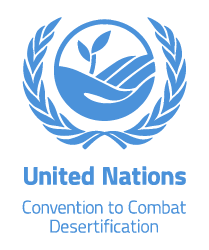Location
The United Nations Convention to Combat Desertification in Those Countries Experiencing Serious Drought and/or Desertification, Particularly in Africa (UNCCD) is a Convention to combat desertification and mitigate the effects of drought through national action programs that incorporate long-term strategies supported by international cooperation and partnership arrangements.
Members:
Resources
Displaying 536 - 540 of 585Agriculture, resource management and institutions : A socioeconomic analysis of households in Tigray, Ethiopia
Empirical investigation of the impact of institutional and socioeconomic factors on agricultural productivity and natural resource conditions is important for an informed evaluation of current policies, and to identify areas for future improvements. In this line, the current study addresses three topics of relevance to the process of agricultural intensification and natural resource management in the context of the less-favoured Highlands of Tigray, Ethiopia.
Environmental Economics Toolkit: Analyzing the Economic Costs of Land Degradation& the benefits of Sustainable Land Management.
This Toolkit has been prepared to support the design and implementation of Sustainable Land Management (SLM) programs. The specific purpose of the Toolkit is: to inform the user of the approaches that can be followed to analyze and value the economic costs of land degradation and the benefits of sustainable land management. ‘Land’ is interpreted broadly in the Toolkit, also including wetlands and coastal zones. The Toolkit contains five Tools that together present a detailed description of the various relevant ecological and economic assessment methodologies.
Environmental Economics Toolkit: Analyzing the Economic Costs of Land Degradation& the benefits of Sustainable Land Management.
This Toolkit has been prepared to support the design and implementation of Sustainable Land Management (SLM) programs. The specific purpose of the Toolkit is: to inform the user of the approaches that can be followed to analyze and value the economic costs of land degradation and the benefits of sustainable land management. ‘Land’ is interpreted broadly in the Toolkit, also including wetlands and coastal zones. The Toolkit contains five Tools that together present a detailed description of the various relevant ecological and economic assessment methodologies.
Caring for the land: Best practices in soil and water conservation in Beressa watershed, highlands of Ethiopia
About 88% of the population is concentrated in the highlands, which constitute less than half of the national territory; here the population density is 141 persons km-2. Agriculture is the main source of livelihood and national income in the country. Over 85% of the population directly depends on it and about half of the GDP is generated from the sector. However, agriculture is small-scale and subsistence oriented, and it is in a very low state of development.
Sustainable management of marginal drylands(SUMAMAD). Proceedings of the Third Project Workshop Djerba,Tunisia 11–15 December 2004
Millennium Development Goal Number Seven is particularly concerned with the safeguarding and provision of freshwater resources to all human.beings; this is a major challenge – and perhaps even the main challenge – for all the world’s drylands. SUMAMAD project aims at the sustainable management of marginal drylands, where the scarcity of water imposes restrictions for the productivity of each particular ecosystem. It is needed therefore to look into the entire water complex so as to promote a wise and sustainable water use. However,


